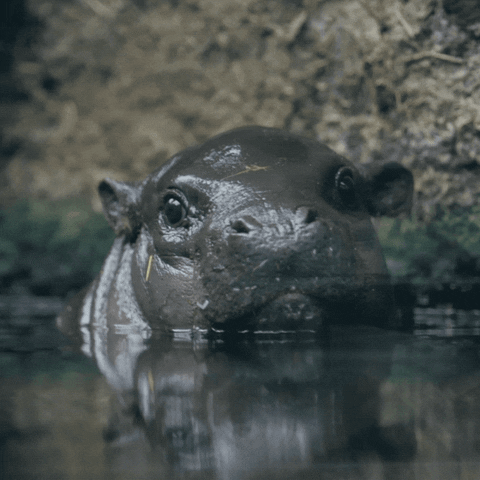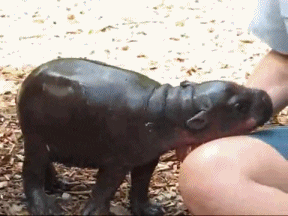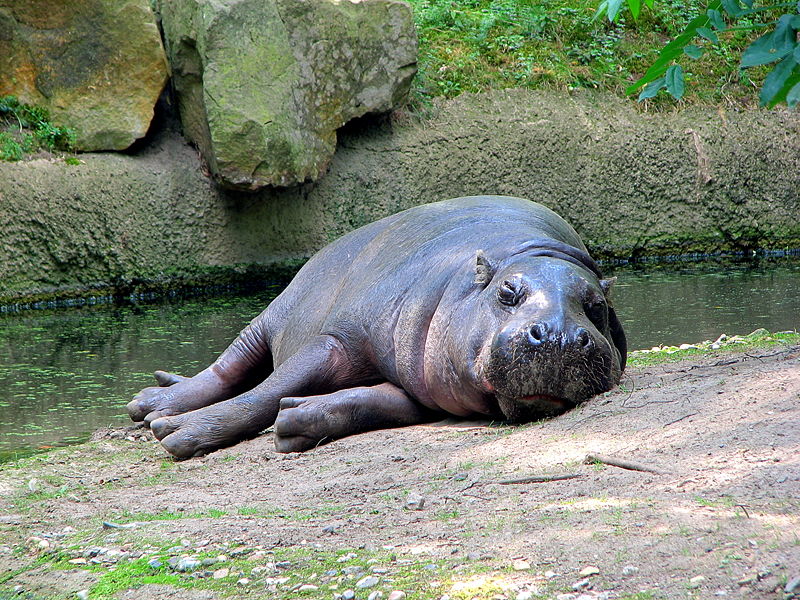Pygmy Hippopotamus Choeropsis liberiensis
Endangered
Guinea, Liberia, Sierra Leone, Ivory Coast.
Nigeria (Extinct)
The Pygmy Hippopotamus is rarely seen because of its secretive, nocturnal habits and consequently not much is known of its ecology. This hippopotamus mainly inhabits lowland primary and secondary forests, close to rivers, streams and Raphia palm tree swamps (Robinson 1970, Bülow 1988, Eltringham 1999), sometimes being found along gallery forests extending into Transitional Woodland and the southern Guinea savanna.
Large areas of the original forest habitat, especially in Côte d’Ivoire, have been destroyed or degraded by commercial plantations of oil palm and other products, shifting cultivation, mining and logging, and hunting for bushmeat is increasing throughout the range (Mallon et al. 2011, FFI and FDA 2013).
IUCN Red List
The forest habitat of the Pygmy Hippo in #Côte d’Ivoire #Guinea #Liberia #Africa is being razed for #palmoil and other crops. They now endangered. Such a beautiful creature deserves to be saved, join the #Boycott4Wildlife
Tweet



Published figures on population size are contradictory, with some reports from Côte d’Ivoire indicating that numbers are probably higher than pre-existing estimates (Robinson 2013). However, evidence from camera trapping and sign surveys indicates that densities are low, particularly in key sites, such as Sapo National Park, Liberia.
Even if the estimate of 2,000-3,000 used previously was doubled to 4,000-6,000, using the lower end of the range (4,000), on a precautionary basis, suggests that the number of mature individuals is still <2,500.
Support the conservation of this species
Further Information

Ransom, C, Robinson, P.T. & Collen, B. 2015. Choeropsis liberiensis. The IUCN Red List of Threatened Species 2015: e.T10032A18567171. https://dx.doi.org/10.2305/IUCN.UK.2015-2.RLTS.T10032A18567171.en. Downloaded on 15 February 2021

How can I help the #Boycott4Wildlife?
Contribute in five ways
1. Join the #Boycott4Wildlife on social media and subscribe to stay in the loop: Share posts from this website to your own network on Twitter, Mastadon, Instagram, Facebook and Youtube using the hashtags #Boycottpalmoil #Boycott4Wildlife.
2. Contribute stories: Academics, conservationists, scientists, indigenous rights advocates and animal rights advocates working to expose the corruption of the palm oil industry or to save animals can contribute stories to the website.
3. Supermarket sleuthing: Next time you’re in the supermarket, take photos of products containing palm oil. Share these to social media along with the hashtags to call out the greenwashing and ecocide of the brands who use palm oil. You can also take photos of palm oil free products and congratulate brands when they go palm oil free.
4. Take to the streets: Get in touch with Palm Oil Detectives to find out more.
5. Donate: Make a one-off or monthly donation to Palm Oil Detectives as a way of saying thank you and to help pay for ongoing running costs of the website and social media campaigns. Donate here







